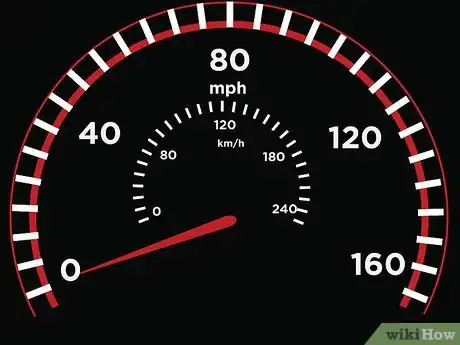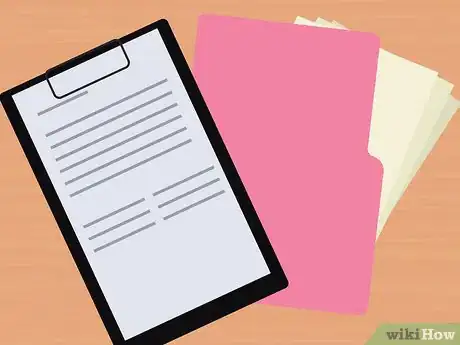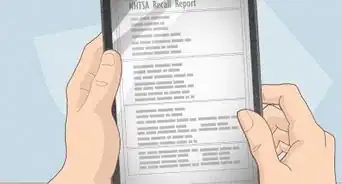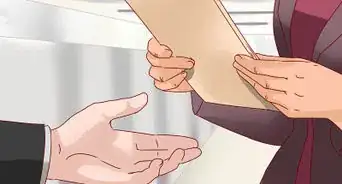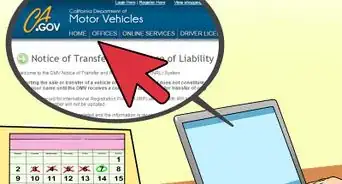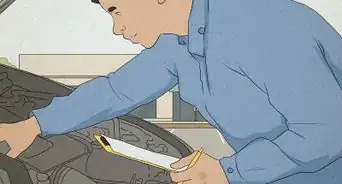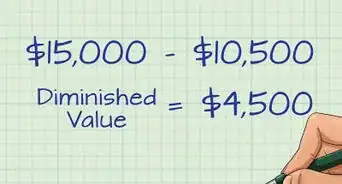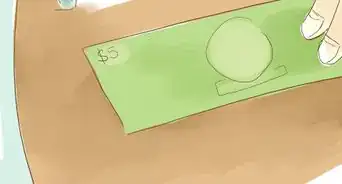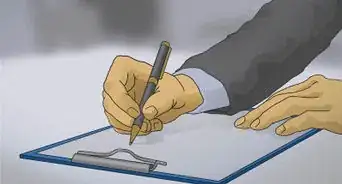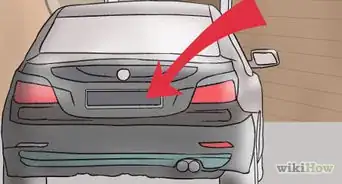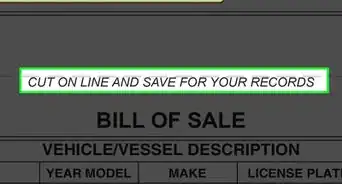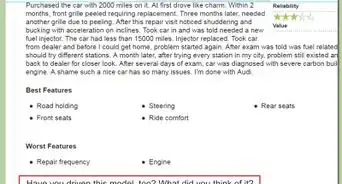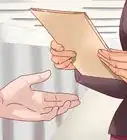This article was co-authored by Clinton M. Sandvick, JD, PhD. Clinton M. Sandvick worked as a civil litigator in California for over 7 years. He received his JD from the University of Wisconsin-Madison in 1998 and his PhD in American History from the University of Oregon in 2013.
This article has been viewed 74,093 times.
When you sell a car in the state of Nevada, you must sign your car's title over to the buyer and surrender your license plates to the Nevada Department of Motor Vehicles (DMV) within 30 days. To complete the sale, you must complete a Bill of Sale, transfer the Certificate of Title, cancel your former registration, and get rid of your old license plates. The buyer of your car will then be completely responsible for obtaining liability insurance and registering the car in their own name with the DMV.
Steps
Transferring the Title
-
1Use the original Certificate of Title. When you sell a car in Nevada (as well as most other states), you transfer ownership of the car by transferring a legal document called a Certificate of Title.[1] To sell a vehicle, you must have the actual Certificate of Title. If for some reason you do not have the original Certificate of Title, you must get a duplicate from the Department of Motor Vehicles.
- If the car was previously titled in Nevada, you must apply to the Nevada Department of Motor Vehicles for a duplicate. The application form is available at http://dmvnv.com/pdfforms/vp012.pdf.
- If the car was previously titled in another state, you must apply to that state to get a duplicate title.[2]
-
2Pay off all liens before conducting the sale. In Nevada, you may not sell a car that has outstanding liens on it. The new owner is not allowed to agree to take over your payments. You must first satisfy those liens and have the lien holder sign off that the loans are paid, and then you can proceed with your sale.[3]Advertisement
-
3Complete the transfer portion of the Title. It is important that you accurately complete all the seller’s information as it is typed on the Certificate of Title. If you do not complete the transfer information accurately, then the sale may not be valid.
- If the original title listed more than one name as owner, you need to pay close attention to the way they are listed. If the original owners were listed as A “and” B, then both people must sign the transfer. If the original owners were listed as A “or” B, then either one may sign the transfer for it to be valid.[4]
-
4Provide the current odometer reading at the time of sale. Federal and state laws require that the seller must disclose the accurate odometer reading whenever a vehicle is sold or transferred by gift, inheritance, etc.[5]
-
5Sign the Title to complete the transfer. Both the seller (one or more, as required) and the buyer must sign the transfer portion of the Certificate of Title to complete the sale. The title is then given to the buyer, who then becomes responsible for his own insurance and registration with the state.[6]
- One exception is that if the buyer is getting a loan to buy the vehicle, and if that lender is keeping a lien on the vehicle, then the title will go to the lender. The lender will keep the title until the loan is repaid in full. The buyer is still responsible for insurance and registration for the vehicle in order to be able to drive it.
Completing a Bill of Sale
-
1Start with a Bill of Sale. The Bill of Sale provides proof of sale for your car. It will also protect you from being responsible for the car if it is abandoned by the person you sold it to.[7] You can get a copy of the Official Nevada Bill of Sale form in three different ways:
- Download the DMV Bill of Sale form. You can find the official Nevada DMV Bill of Sale form at http://dmvnv.com/pdfforms/vp104.pdf. Print a copy of that form and complete it as part of your sale of the vehicle.
- Visit a Nevada DMV office in your area to pick up a copy.
- Call the DMV's Vehicle Title department 775-684-4810 to request that a Bill of Sale form be mailed to you.
-
2Complete the Bill of Sale form carefully. All spaces on the form must be filled in completely and accurately. Any mistakes on the form - even if there is evidence of erasing a mistake - will require you to start over or get additional documentation.[8] The Bill of Sale requires:
- Identification and address of the buyer(s)
- Identification and address of the seller(s)
- Sale price
- Vehicle Identification Number for the car
- Signatures of buyer(s) and seller(s).
-
3Keep the Bill of Sale as a record. The seller will keep the Bill of Sale as a record of the transaction. A copy should be made for the buyer. It will be needed for the buyer to register the vehicle.[9]
Notifying the DMV and Canceling your Registration
-
1Notify the DMV that you have sold your car. This process will cancel the registration that you had on the vehicle and will release you from any financial or legal obligations and responsibilities that could arise after the sale. You may also be entitled to a registration fee credit.[10]
- Use the online portal. To provide notice of the transfer online (and save a trip to the DMV in person), you can visit the DMV website at https://dmvapp.nv.gov/DMV/Application/DMVPortal/Pages/Default.aspx. You will be asked to create an account, and then you can follow the links to notify the state of the transfer of the vehicle.
- Visit a DMV office. Call ahead to find out if you can make an appointment to save time waiting in line. You can find the list of DMV offices at http://dmvnv.com/locat.htm#Full.
-
2Surrender your license plates to the DMV within 30 days of the sale. When you sell a car in Nevada, you may not leave the plates on the car for the new buyer. You must remove them and either transfer them to another car that you own or return them to the DMV. Your surrender options include returning your plates to a DMV office, mailing your plates to the DMV, or keeping your plates as a souvenir.[11]
- Surrender the plates in person. Take your license plates to a full service DMV office location and turn them in to a DMV representative. Call ahead to find out if you can make an appointment to save time waiting in line. You can find the list of DMV offices at http://dmvnv.com/locat.htm#Full.
- Surrender the plates by mail. Mail your license plates, decals, and a signed letter that contains your contact information and requests license plate cancellation to the DMV. Send your plates to: Department of Motor Vehicles, Central Services Division, 555 Wright Way, Carson City, Nevada 89711-0700.[12]
-
3Transfer the plates to another car you own. If you would like to use the license plates on another car that you own, you can complete this transfer and register the plates to the new car online. You will use the MyDMV portal at https://dmvapp.nv.gov/DMV/Application/DMVPortal/Pages/Default.aspx.[13]
-
4Keep your license plates as a souvenir. This procedure will require you to take the plates to a DMV office and scrape the decal from your rear license plate in person in front of a DMV representative. You will then be allowed to keep the plates as a souvenir or for possible use again in the future.
Warnings
- It is against the law for you to sell more than 3 vehicles per year if you personally own the vehicles and do not have a dealer's or salesman license. To obtain a dealer's license, you must provide the DMV with a completed Certificate of Employment signed by a licensed Nevada dealer and pay the applicable dealer's licensing fees.⧼thumbs_response⧽
References
- ↑ http://www.autotrader.com/car-news/buying-a-car-how-to-transfer-title-and-register-your-vehicle-34108
- ↑ http://dmvnv.com/regprivate.htm
- ↑ http://dmvnv.com/regprivate.htm
- ↑ http://dmvnv.com/regprivate.htm
- ↑ 49 C.F.R. 580.5
- ↑ http://dmvnv.com/regprivate.htm
- ↑ http://dmvnv.com/regprivate.htm
- ↑ http://dmvnv.com/pdfforms/vp104.pdf
- ↑ http://dmvnv.com/regprivate.htm



